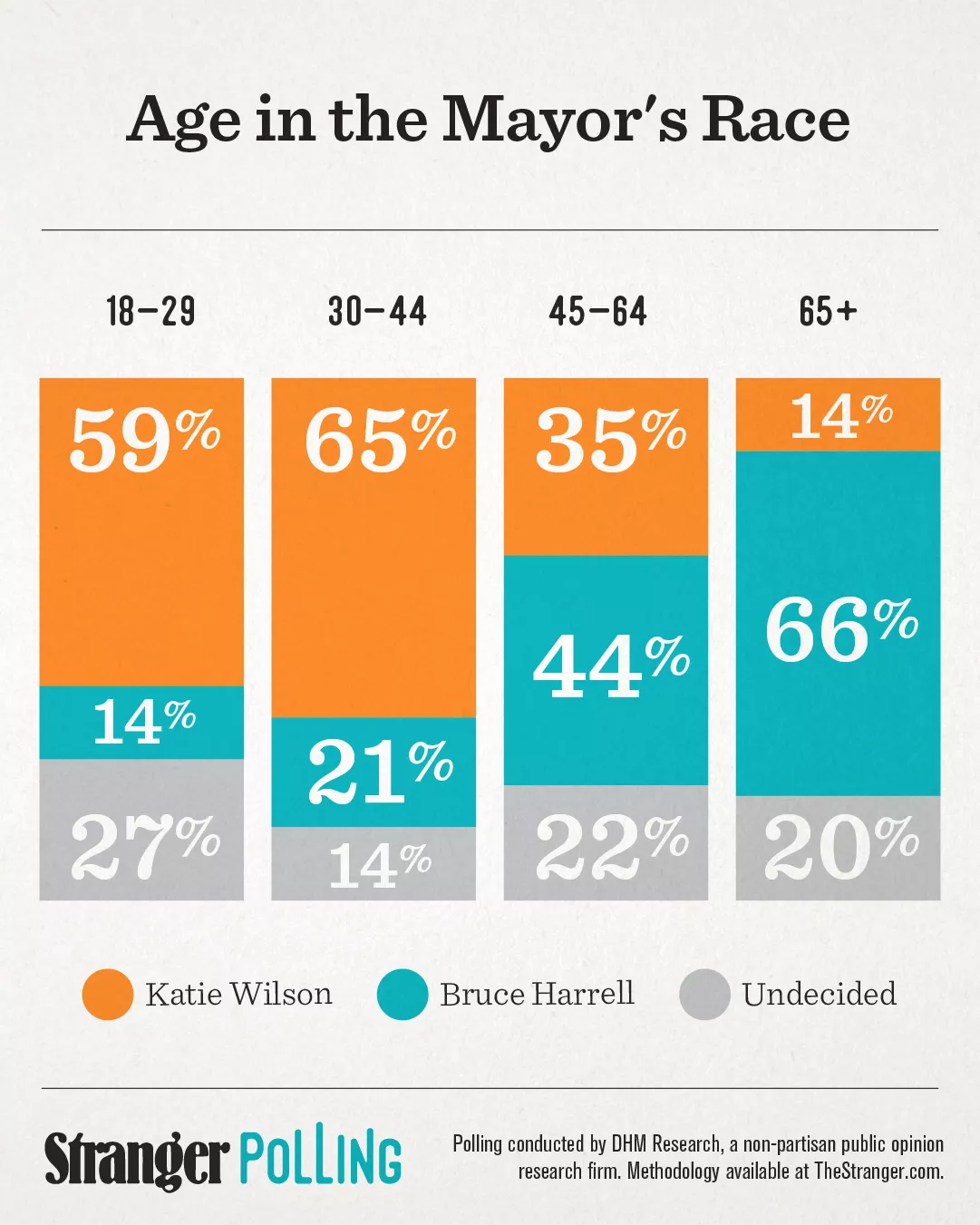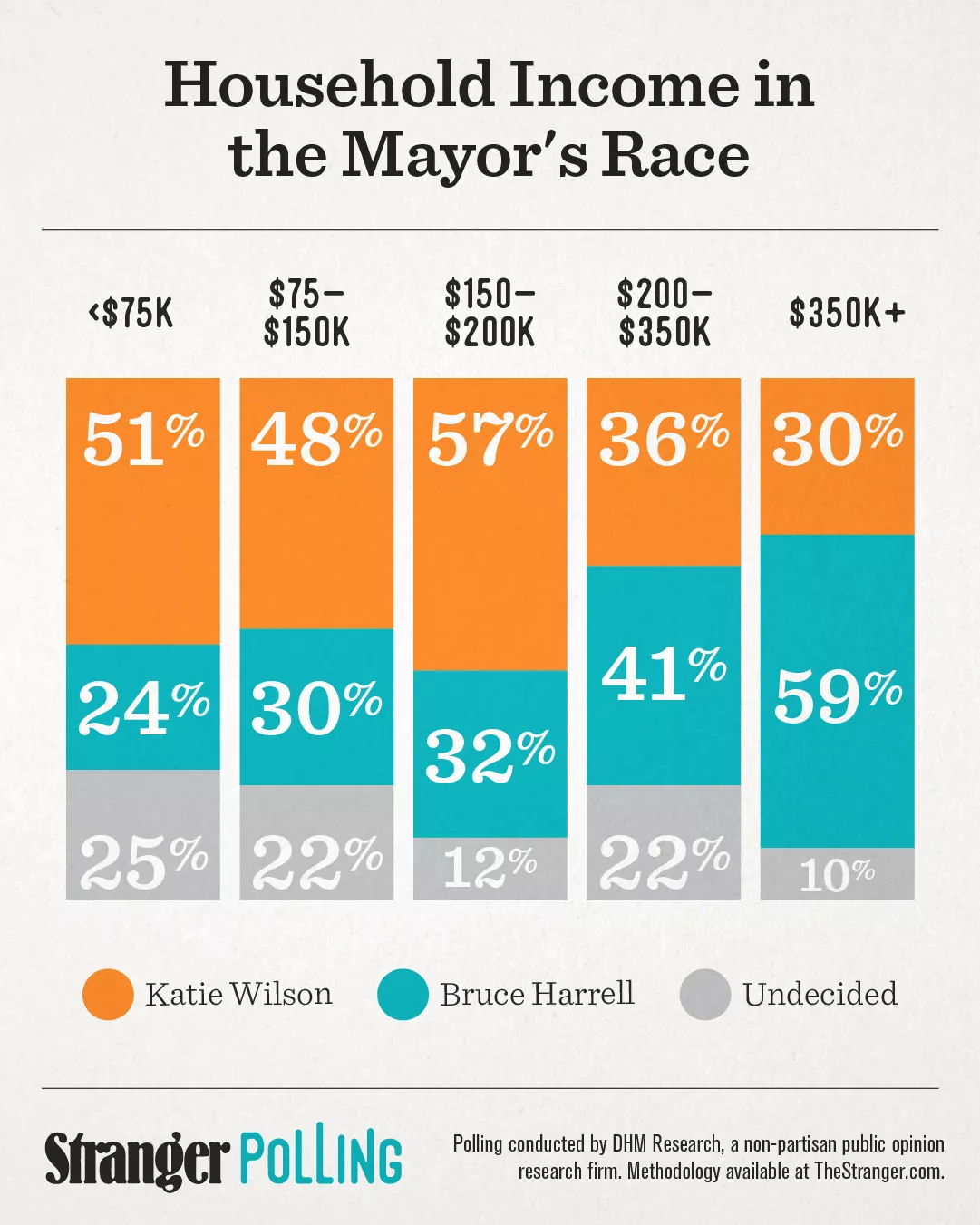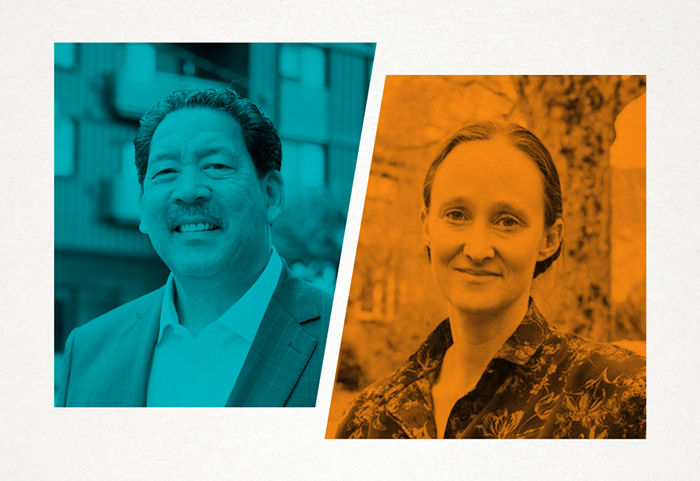The Stranger did something new this year: we teamed up with DHM Research, a PNW-based non-partisan public opinion research firm, to formally survey the city and find out what’s happening this year in Seattle politics.
Let’s start with the big news: Progressives are ahead. Among likely voters, 33 percent plan to vote for Dionne Foster, compared to 24 percent who plan to vote for Sara Nelson. Erika Evans is polling 11 points ahead of Ann Davison. And Alexis Mercedes Rinck is a whopping 34 points ahead of Rachael Savage.
The tightest race is for the mayor’s office. While Katie Wilson is four points ahead of Bruce Harrell with likely voters, her lead is within the margin of error. That means they’re statistically tied.
This race is going to be all about turnout.
When we polled the general population, Wilson had a 12-point lead on Harrell, 46 percent to 34 percent. But when we limited the sample to people who are likely to vote in this general election, her lead narrows to that 4-point statistical tie.
To reclaim some of that 12-point lead, Wilson would need to get out the vote with the “50/50 voters”—people who said turning in their ballot this November was a toss-up. Among them—which was about a third of respondents—54 percent are leaning Wilson.
Wilson won the primary almost nine percentage points ahead of Harrell. But 24 percent of the people who voted in the primary say there’s only a 50 percent chance they’ll vote in the general, meaning she can’t necessarily count on those same voters turning out.
We can’t say for sure why primary voters might not come out this time around. But the political climate has changed dramatically since August 5. In the primary, Wilson was still seen as an upstart candidate, riding a wave of populist enthusiasm that surfed across the country from Zohran Mamdani’s campaign. But her primary win woke her Harrell up, and he’s spent the past two and a half months attacking her experience. Meanwhile, Harrell’s supporters have fired up the political machine that pushed the 2021 election to the right, rallying support behind a vision of “bipartisan,” “moderate,” “centrist” government.
The progressive cry for voter turnout aligns with political conventions here in Seattle. Young people skew more progressive, but they also tend to vote less.
“We interpret this data to mean that if our supporters turn out to vote, we will win the race,” the Wilson campaign said in a statement. “But that means our supporters need to show up to win this race!”
Harrell’s campaign did not respond to The Stranger‘s request for comment on this data.
What Makes a Wilson Voter?
There are two fault lines that divide Harrell and Wilson votes: age and income bracket. Younger voters, between 18 and 44, swing heavily toward Wilson. Meanwhile, Harrell has 66 percent of the 65-plus vote.

When it comes to income, Wilson takes everyone with a household income under $200,000 handily, and almost 60 percent of Wilson voters are renters. Harrell vibes most with the $350,000+ crowd.

These polling results mirror what we’ve seen consistently in the campaigns’ fundraising. Harrell’s PAC, Bruce Harrell for Seattle’s Future, is stacked with $1.6 million in big-dollar donations from commercial real estate developers, PACs for the building industry, and a smattering of people that are wealthy enough to own Seattle sports teams (including the Mariners’ John Stanton, and we’re not not saying that he cursed them in the playoffs with that $50,000 donation).
Between her PAC and her campaign, Wilson’s run is fueled by small-dollar donors. Her average itemized campaign donation is just $114, Harrell’s is almost twice that. Among Harrell’s PAC donors, 61 of them donated $10,000 or more. Wilson’s PAC has four.
For details on The Stranger/DHM Research’s methodology, go to: Stranger Polling




